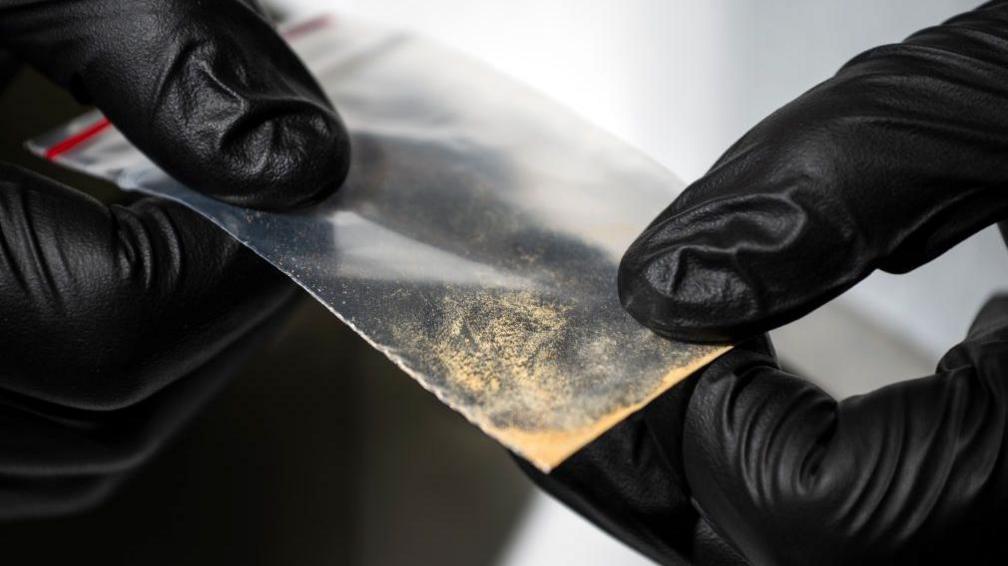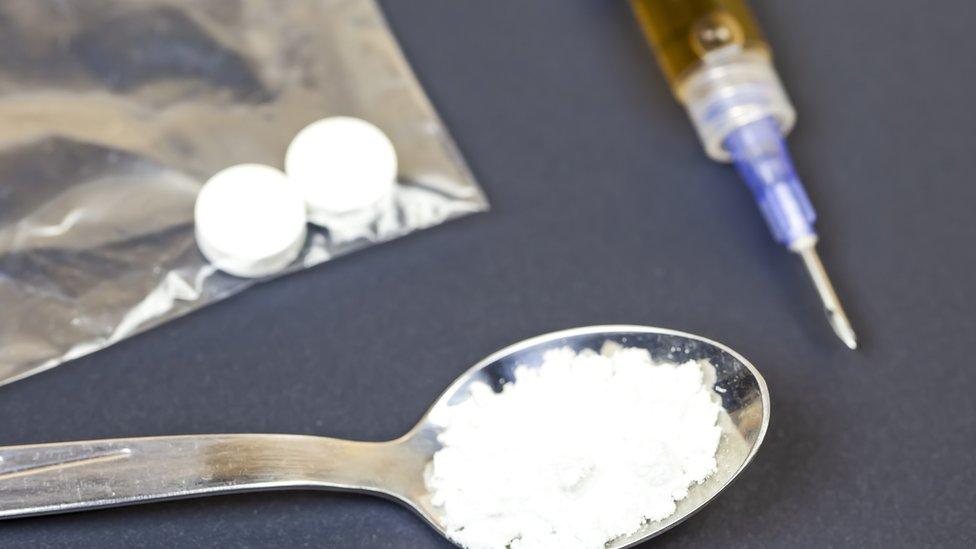Super-strength opioids spreading across Europe and North America - UN

- Published
The use of nitazenes, a group of drugs which can be more potent than fentanyl, is spreading across Europe and North America, the UN drug agency has warned.
The synthetic opioids have been detected in the UK, US, Slovenia, Estonia, Latvia, Belgium and Canada, the UN Office on Drugs and Crime (UNODC) wrote in its latest World Drug Report, external.
There has also been an increase in the number of deadly overdoses connected with nitazenes.
The super-strength drugs, of which there are several types, are significantly more potent than heroin. Their emergence has prompted urgent warnings from health agencies around the world.
It follows a ban on poppy cultivation in Afghanistan, which saw opium production drop by 95% in 2022.
It is too early to know what long-term effects this may have on factors such as heroin purity, the UNODC report says, but it will likely lead to heroin users switching to other opioids, which may "lead to an increase in overdoses".
A BBC investigation earlier this year found nitazenes are being smuggled into the UK inside dog food and catering supplies, and being offered for sale on social media.
The UK has classed nitazenes as class A drugs, with anyone caught making or supplying them facing life in prison. But experts say the government has been too slow to take action in getting the drug off the streets.
Fentanyl, another synthetic opioid, is 50 times more potent than heroin. Its highly-publicised epidemic in the US contributed to 100,000 deaths in 2022, according to the Center for Disease Control and Prevention.
The UNODC's report states that "illicitly manufactured fentanyls" are still behind "unprecedented number of overdose deaths," the numbers "may be tapering off."
Global drug use increased by 20% in the past decade to 292 million users in 2022, the report said.
Cannabis remains the most widely used with 228 million users worldwide. It is followed by:
Opioids - 60 million
Amphetamines - 30 million
Cocaine - 23 million
Ecstasy - 20 million
What are Nitazenes?
Nitazenes were first developed in the 1950s as a pain-killing medication but are so potent and addictive they have never been approved for medical or therapeutic use
Injected, inhaled or swallowed, mixing them with other drugs and alcohol is extremely dangerous and significantly increases the risk of overdose and death
The new drugs are covered by the UK's Psychoactive Substances Act 2016, external
Related topics
- Published22 April 2024

- Published20 March 2024
